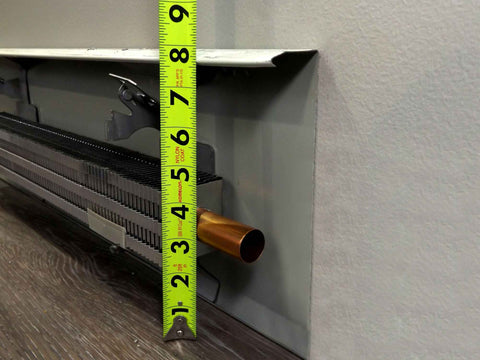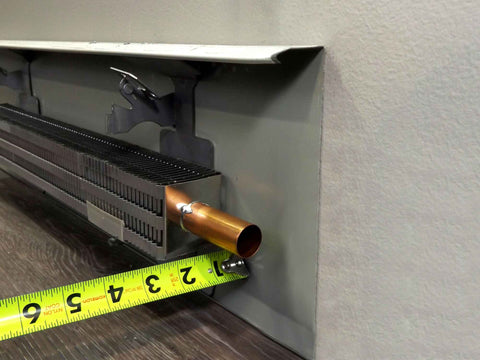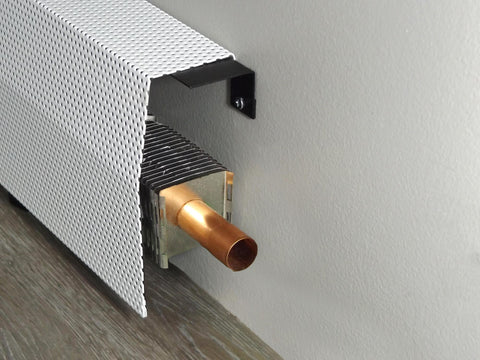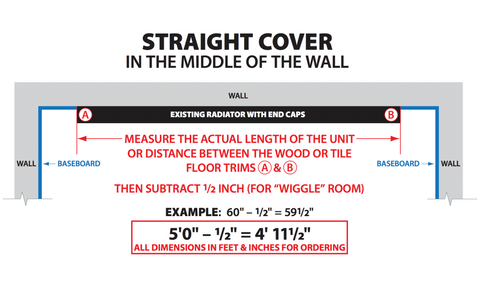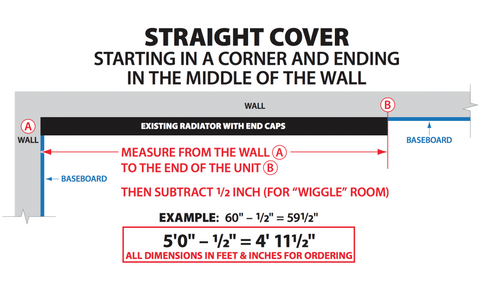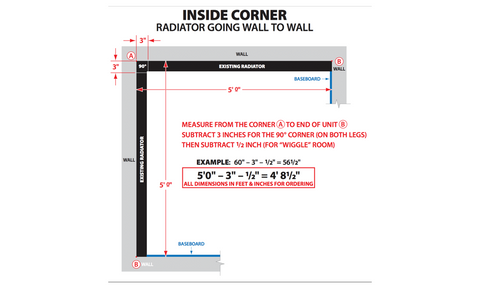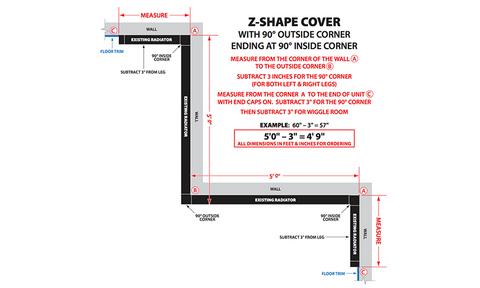Commercial buildings face unique challenges when it comes to heating. From office spaces to clinics and libraries, building owners are always looking for cost-effective, reliable, and easy-to-maintain solutions. Enter baseboard heaters—a heating solution that has become a favorite for many commercial buildings.
But what exactly are baseboard heaters, and why are they so popular in commercial spaces? We’ll discuss why commercial buildings use baseboard heaters, how they work, and tips for optimizing their use.
Understanding Baseboard Heaters
As the name suggests, baseboard heaters are installed along the baseboards of walls. Most hydronic water heating systems feature boilers that run on oil or gas to heat the building. A pump circulates the water through the fin tubes throughout the building. This heat is then dispersed outward, warming the surrounding air through convection.
One of the standout features of baseboard heaters is their simplicity. They require no ductwork or complicated connections—just a system of copper pipes and fin tubes—and they’re easy to install and operate. Each unit typically comes with a thermostat that allows users to control the temperature of the space it serves.
This straightforward design is a big part of what makes baseboard heaters appealing for commercial buildings. Now, let's look at why they're so popular in business settings.
Benefits of Baseboard Heaters for Commercial Buildings
Baseboard heaters offer various advantages, especially in commercial spaces. From energy efficiency to ease of maintenance, these heaters tick all the right boxes for building owners and facility managers. Below, we break down their most significant benefits.
Energy Efficiency
One major appeal of baseboard heaters is their impressive energy efficiency. Hot-water heat is by far the most efficient form of heating there is. This efficiency translates into lower utility bills for commercial buildings—a massive win for budget-conscious owners.
The heat stays concentrated in the intended area because there is no forced air circulation. This eliminates unnecessary energy consumption, making baseboard heaters an eco-friendly choice for businesses striving for sustainability.
Zone Heating
Ever wish you could only heat specific areas instead of the whole building? Baseboard heaters make this possible. Their design allows for zone heating, meaning you can control the temperature in individual rooms or areas.
This is a game-changer for commercial buildings. Heating unoccupied meeting rooms or storage areas has become a thing of the past. Instead, focus your heating only where needed, saving energy and keeping different zones comfortable for their specific uses.
Low Installation Costs
Installing a centralized HVAC system can be financially daunting, especially for small to medium-sized businesses. Luckily, baseboard heaters offer an affordable alternative. Their simple design requires minimal labor and equipment for installation, helping you save on upfront costs.
Whether you’re outfitting a single office or an entire floor of workspaces, the cost-effectiveness of baseboard heaters makes them an ideal pick for businesses minding their budgets.
Quiet Operation
Commercial spaces like offices, libraries, or clinics often prioritize a quiet environment to boost productivity or create a sense of calm. Baseboard heaters lack fans or motors and are practically silent when in operation.
This noiselessness enhances the environment without the constant hum or buzz you’d typically get with forced-air systems.
Low Maintenance Requirements
No one likes dealing with high-maintenance equipment, especially in busy commercial settings. The good news is that baseboard heaters are incredibly low-maintenance. With no moving parts or intricate systems, they rarely require repairs or upkeep beyond basic cleaning.
This reliability means building owners and facility managers can focus more on the bigger picture instead of troubleshooting heating issues.
Space-Saving Design
Space is often at a premium in commercial buildings. Baseboard heaters are designed to fit snugly along walls or baseboards, maximizing room without intruding on usable space.
This makes them an excellent option for smaller offices, conference rooms, or shared work environments where every square foot counts.
Improved Air Quality
Because baseboard heaters don’t rely on fans to move heat, they don’t circulate dust, allergens, or other particles in the air. This feature is a significant advantage for commercial spaces where air quality is a concern—like medical clinics or coworking spaces.
Cleaner air means a healthier environment for employees, clients, and visitors.
Durability
Commercial buildings need heating systems that can stand the test of time, and baseboard heaters deliver on this front. Their sturdy, simplistic design allows them to endure wear and tear, ensuring longevity.
Once installed, they will provide reliable heating for years to come, making them a cost-effective long-term investment.
Choosing the Best Heating Solution for Your Commercial Building
When deciding on the ideal heating system for your commercial space, keep the following in mind:
- Building Size and Layout: Baseboard heaters are ideal for targeted heating, so consider the number of rooms or zones you’ll need to heat.
- Usage Requirements: Customizable thermostats are a must for environments with frequent temperature changes.
- Budget: Baseboard heaters are a clear winner if you need an affordable, straightforward solution.
- Noise Sensitivity: Quiet operation makes baseboard heaters unbeatable for certain businesses, like libraries or clinics.
By weighing these factors, you can ensure you choose the best heating solution for your building's unique needs.
Making the Most of Your Baseboard Heaters in a Commercial Space
To get the most out of your baseboard heaters, follow these tips and tricks:
- Conduct Regular Maintenance: While baseboard heaters are low-maintenance, periodic cleaning and inspections keep them functioning optimally. Clear any dust or debris to improve heat output and efficiency.
- Install Baseboard Heater Covers: Covers protect your heaters from potential damage while enhancing their appearance.
- Optimize Placement: Ensure the heaters are placed in areas without furniture or curtains obstructing heat. This maximizes their effectiveness.
By taking these steps, you can ensure your heating system runs efficiently while extending the life of your baseboard heaters.
Enhance Your Baseboard Heaters with EZ Snap Covers
Baseboard heating combines efficiency, affordability, and reliability in a way few heating systems can. Understanding the benefits of baseboard heaters in commercial buildings will help you decide if this is the best option for your space.
If you want to take your heating setup even further, check out the baseboard heater covers from EZ Snap Covers. They’re the perfect complement to your heating system and are designed for safety and style.
Get started today and enjoy a warmer, more efficient commercial space!
